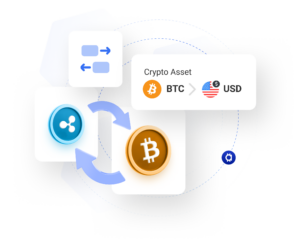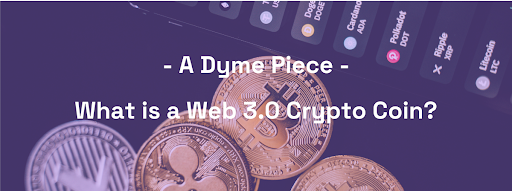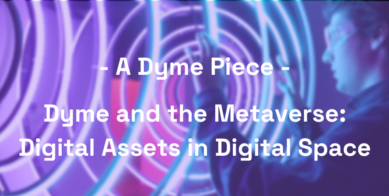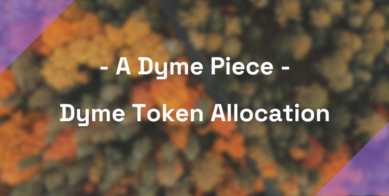If Web 3.0 is the next growth phase for the world wide web, then Web 3.0 cryptos are the next growth phase for digital assets run on a decentralized blockchain network. Since the decentralized web needs a decentralized network, it follows that a currency and payment system native to that network is a natural fit.

But finding an interoperable web 3.0 reserve cryptocurrency is not a simple task. While there are hundreds and hundreds of crypto coins worldwide, few are suitable for Web 3.0 projects. It’s good news that Web 3.0 projects are growing, and most are future homes for the right Web 3.0 crypto coin.
What are the biggest Web 3.0 projects in 2023?
Social media platforms
Social media companies are ripe for disruption by decentralized protocols. The user-generated content on Web 2.0 social platforms is better served and more fairly monetized on a peer-to-peer network.

How the social network functions will be modified by Web 3.0 to favor creators and to support the semantic web. Blockchain technology will make it virtually impossible for social media networks to be restricted. Network users will participate no matter where they are in the world. The semantic web, one facet of Web 3.0, holds real potential to further advance the social web.
Web 3.0 social network platforms include Chingari, Steemit, Sola, Indorse, onG.Social, PROPS Project, Lifetoken, and Yours. Each makes use of blockchain and are working toward a Web 3.0 future. Here is an outline of notable projects:
- Steemit: An excellent example of a Web 3.0 website is Steemit. Steemit utilizes its own Steem blockchain exclusively. It is best characterized as a decentralized blogging and self-publication platform that aids content creators in generating revenue from their work. It serves as a substitute for Reddit.
- Lifetoken: An outstanding Web 3.0 example of the new social network is the participative social web company Lifetoken. Lifetoken utilizes Cosmos to connect to the Dyme blockchain. One of Lifetoken’s key features is how they reward participation, which advances the pay-per-click and pay-per-impression metrics of Facebook and TikTok. Lifetoken aids content creators in adding to and retaining their audiences. It serves as a substitute for Facebook and TikTok.
- Indorse: Blending Web 3.0 with metaverse, Indorse network users anonymously share endorsements. When viewed from the standpoint of social endorsements, it is a developing substitute for Yelp.
Storage provider
Data storage in the cloud is complex; in a distributed environment, it takes ingenuity. Nonetheless, Web 3.0 technologies like blockchain can use an exclusively decentralized infrastructure to replace the traditional data center. This gives everyday users an alternative to Google Drive and other cloud storage services.
Methods to store data and transmit data securely over a peer-to-peer connection are foundational challenges. Smart contracts and decentralized protocols are natural fits to address these market needs. Notably, data encryption plays a big role in blockchain, so Web 3.0 decentralized storage offers excellent security.
A decentralized network built to manage data can make hosting feasible. Some samples of decentralized storage using Web 3.0 are:
- Sia: An aspirational decentralized network powered by its own blockchain, Sia takes its mission seriously. Sia uses blockchain to enable file sharing using virtual private network capabilities that rival cloud providers’ storage buckets.
- Storj: Perhaps the original decentralized storage provider, Storj operates on Ethereum, currently the world’s biggest distributed network. Storj provides a decentralized alternative to enterprise cloud storage space. It supports file sharing and secure streaming, enabling massive amounts of data transfers between users.
- Filecoin: Filecoin is a Protocol Labs project that employs a dual method and two different kinds of network nodes. Filecoin network users’ data is treated like “humanity’s most important information,” according to the company. It has a strong security footing, letting users restrict access to data from search engines.
Insurance and banking

Perhaps the central feature of blockchain is decentralized banking. Blockchain technology was designed to alter the relationship between banks, people, governments, and currency. When founders create decentralized projects, they often look to banking.
Insurance has many of the same markers of the need for disruption: monolithic companies, negative user interaction, and stale innovation. Some samples of insurance and banking web 3.0 projects are outlined below:
- Everledger: Built on Hyperledger, the Everledger insurance solution is a blockchain platform for more effective underwriting. One of Everledger’s key features is the ability to leverage provenance data, combining real-world data about ownership with the technological innovation of blockchain.
- SafeShare: Based in London, SafeShare markets itself as “insurance for the sharing economy.” Built on the obscure distributed ledger MetroGnomo, SafeShare provides a range of insurance products.
- Cashaa: Bank accounts met web technologies met blockchain data? It’s tough to describe Cashaa, which bills itself as the next-generation banking platform. Their crypto token is built on two blockchain networks: Binance and Polygon.
Exchange services
You can’t build a Web 3.0 project list without an exchange for digital assets. After the fallout from FTX, BlockFi, Terra, and others, decentralized exchanges are progressively gaining favor. Decentralized autonomous organizations imply that there is no central authority and no owner-side conflict of interest. To automate their services, defi exchange services primarily utilize various decentralized finance tools. Web 3.0 is related to decentralized exchange since it depends on trust. An outline of a few of the decentralized exchanges available is given below:
- EOSFinex: On top of the EOS.IO operating system, EOSFinex is a decentralized exchange. The EOS landscape contains a large number of additional dApps.
- IDEX: For trading ERC-20 tokens, a well-known decentralized exchange is IDEX. Anybody with an Ethereum wallet can begin trading on the network because of its user-friendly design. You must utilize MetaMask to get the most out of IDEX or any decentralized Ethereum-based exchange.
Video streaming and music streaming
Cloud-based media streaming is the bee’s knees. Internet users have flocked to streaming, and internet access is dominated by video and music streaming. Twitch and YouTube have been pilloried for their low compensation to content producers. Both platforms make it difficult for fresh streamers to start, and no Web 2 media platform has a fix for this issue.
Web 3.0 examines the music and video streaming issue so that creators can share their content’s financial benefit. In addition to Lifetoken (above), some samples of web 3.0 video and music websites are highlighted below:
- UjoMusic: UjoMusic is a music website where musicians may post and share their work without worrying about copyright or royalties. Cryptocurrencies and smart contracts drive it.
- Livepeer: Livepeer is a blockchain-based decentralized platform. It uses Ethereum to create a Web 3.0 smart contracts-based streaming stack.
- LBRY: LBRY bills itself as “the people’s marketplace.” It combines a proprietary blockchain with torrent client software to store digital assets. In the case of LBRY, the assets are publications.
❓ What Web 3.0 crypto coins are in use today?
While many crypto tokens exist, few of them are workable cryptocurrencies. Even smaller is the list of cryptocurrencies that can serve as Web 3.0 crypto coins.
While many crypto tokens exist, few of them are workable cryptocurrencies. Even smaller is the list of cryptocurrencies that can serve as Web 3.0 crypto coins.
You’ll note that some websites list mostly gaming coins and Ethereum. Others list niche crypto projects…and Ethereum. Still others list crypto coins by market capitalization.
While they’re good lists of crypto coins, there’s not much writing about the needs of a Web 3.0 crypto coin. Hence, that’s the purpose of this article and others like it!
Is one blockchain better than another?
Simply put, yes. The question then becomes, “which is the right blockchain for a Web 3.0 crypto coin?”
Interoperability
While this could be conflated with the following section, interoperability is different. In the case of Web 3.0 digital currencies, it means more than simple asset transfers. It means cross-chain data availability proofs and can mean fully shared security.
Cosmos deals with the non-uniformity of security assumptions across chains (referred to as Zones in Cosmos) by treating interoperability as an opt-in process. This also connects to the sovereignty argument below since each chain chooses its own level of exposure.
Avoid competing networks
Seemingly every Web 3.0 project has its own blockchain. That makes it challenging to organize blockchain data across projects, but when the Web 3.0 economy is as fragmented as the Web 2.0 economy, the risk of forming new silos to replace the old centralized silos is very high.
Transaction fees
More transaction fees are never a good choice, and yet many existing Web 3.0 projects are built on blockchains with high fees. This isn’t an entirely bad idea, but it results in less-than-optimal outcomes.
Each new blockchain requires new enterprise validator nodes. This intentionally abandons the term “miner” since most blockchains are switching to proof of stake validation on a consensus algorithm. Validators look for projects which are sustainable and grow.
Speed and sovereignty
Decentralized networks are not fast. The benefits of decentralization come with some drawbacks, and speed is one of them. A Web 3.0 crypto coin needs a sovereign blockchain so that it doesn’t rely on another party for stability and management.
As a corollary, a blockchain for Web 3.0 crypto then becomes faster because it is purpose-designed for those objectives.
👉 Is every cryptocurrency a Web 3.0 crypto coin?
Far from it. If anything, many cryptocurrencies and crypto tokens are supremely wrong for use as Web 3.0 crypto coins.
The challenge comes in design. Most crypto projects use blockchains and smart contracts built for a specific purpose. It follows logically then that a Web 3.0 crypto would need to be purpose-built to address the needs of the Web 3.0 community.
Does a Web 3.0 crypto coin need to be managed by a DAO?
Yes. Seriously, yes. Just yes.
Controlled by users, managed by smart contracts
Users benefit as control shifts back from central authorities (specifically large technology companies) toward equal access and corporate censorship shifts toward censorship resistance. This benefit comes from freeing user-generated content from the highly centralized, powerfully oligarchic structure of Web 2.0, which has a range of massive corporations controlling the financial benefit of that content for their own gain.
Governance aligned with legal structure aligned with code
It’s not as catchy as “not your keys, not your crypto”, but the alignment of legal structure and foundational legal documents with the software written to power governance is extremely important.
Most of the crypto winter of 2022 was caused by fraud (or suspected fraud) which was enabled by a governance process that was easily avoided by the fraudsters, founders, and executives.
Is a peer-to-peer network the right choice for payment coins in Web 3.0?
Maybe.
If the peer-to-peer network is a blockchain, subject to the various and sundry topics above, maybe. The paucity of Web 3.0 crypto coins in use today speaks to the fragmentation of the market. With market trends showing strongly favorable for Web 3.0 growth, payment processing will be a vital function for Web 3.0 crypto.
🚀 Closing Comments
Because intermediaries are no longer involved in Web 3.0, centralized authorities will no longer control user data. This minimizes the likelihood of government or corporate censorship and the effectiveness of denial-of-service (DoS) attacks. The offers protection for personally identifiable information and personal finance that do not exist today.
More extensive datasets supply algorithms with more information to evaluate as more products connect to the internet. This will allow them to deliver more accurate information that is tailored to the individual user’s demands.
In that environment, a Web 3.0 crypto coin becomes integral to every Web 3.0 project. It will become the core currency of the digital world.



